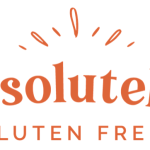Nutritional value and chemical composition.
The table shows the content of nutrients (calories, proteins, fats, carbohydrates, vitamins and minerals) per 100 grams edible part.
| Nutrient | Quantity | Norm** | % of the norm in 100 g | % of the norm in 100 kcal | 100% normal |
| Calorie value | 84 kCal | 1684 kCal | 5% | 6% | 2005 g |
| Proteins | 18.29 g | 76 g | 24.1% | 28.7% | 416 g |
| Fats | 0.6 g | 56 g | 1.1% | 1.3% | 9333 g |
| Water | 79.57 g | 2273 g | 3.5% | 4.2% | 2857 g |
| Ash | 1.8 g | ~ | |||
| Vitamins | |||||
| Vitamin A, RE | 7 μg | 900 μg | 0.8% | 1% | 12857 g |
| Retinol | 0.007 mg | ~ | |||
| Vitamin B1, thiamine | 0.043 mg | 1.5 mg | 2.9% | 3.5% | 3488 g |
| Vitamin B2, riboflavin | 0.043 mg | 1.8 mg | 2.4% | 2.9% | 4186 g |
| Vitamin B5, pantothenic | 0.35 mg | 5 mg | 7% | 8.3% | 1429 g |
| Vitamin B6, pyridoxine | 0.15 mg | 2 mg | 7.5% | 8.9% | 1333 g |
| Vitamin B9, folate | 44 μg | 400 μg | 11% | 13.1% | 909 g |
| Vitamin B12, cobalamin | 9 μg | 3 μg | 300% | 357.1% | 33 g |
| Vitamin C, ascorbic | 7 mg | 90 mg | 7.8% | 9.3% | 1286 g |
| Vitamin PP, NE | 1.1 mg | 20 mg | 5.5% | 6.5% | 1818 g |
| Macronutrients | |||||
| Potassium, K | 204 mg | 2500 mg | 8.2% | 9.8% | 1225 g |
| Calcium, Ca | 46 mg | 1000 mg | 4.6% | 5.5% | 2174 g |
| Magnesium, Mg | 49 mg | 400 mg | 12.3% | 14.6% | 816 g |
| Sodium, Na | 836 mg | 1300 mg | 64.3% | 76.5% | 156 g |
| Sulfur, S | 182.9 mg | 1000 mg | 18.3% | 21.8% | 547 g |
| Phosphorus, P | 219 mg | 800 mg | 27.4% | 32.6% | 365 g |
| Trace Elements | |||||
| Iron, Fe | 0.59 mg | 18 mg | 3.3% | 3.9% | 3051 g |
| Manganese, Mn | 0.035 mg | 2 mg | 1.8% | 2.1% | 5714 g |
| Copper, Cu | 922 μg | 1000 μg | 92.2% | 109.8% | 108 g |
| Selenium, Se | 36.4 μg | 55 μg | 66.2% | 78.8% | 151 g |
| Zinc, Zn | 5.95 mg | 12 mg | 49.6% | 59% | 202 g |
| Essential Amino Acids | |||||
| Arginine * | 1.598 g | ~ | |||
| valine | 0.861 g | ~ | |||
| Histidine * | 0.372 g | ~ | |||
| Isoleucine | 0.887 g | ~ | |||
| leucine | 1.452 g | ~ | |||
| lysine | 1.592 g | ~ | |||
| methionine | 0.515 g | ~ | |||
| threonine | 0.741 g | ~ | |||
| tryptophan | 0.255 g | ~ | |||
| phenylalanine | 0.773 g | ~ | |||
| Replaceable amino acids | |||||
| alanine | 1.036 g | ~ | |||
| Aspartic acid | 1.891 g | ~ | |||
| glycine | 1.103 g | ~ | |||
| Glutamic acid | 3.12 g | ~ | |||
| Proline | 0.603 g | ~ | |||
| serine | 0.72 g | ~ | |||
| tyrosine | 0.609 g | ~ | |||
| Cysteine | 0.205 g | ~ | |||
| Sterols | |||||
| Cholesterol | 42 mg | max 300 mg | |||
| Saturated fatty acids | |||||
| Saturated fatty acids | 0.09 g | max 18.7 г | |||
| Monounsaturated fatty acids | 0.08 g | min 16.8 г | 0.5% | 0.6% | |
| Polyunsaturated fatty acids | 0.13 g | from 11.2 to 20.6 | 1.2% | 1.4% |
The energy value is 84 kcal.
- 3 oz = 85 g (71.4 kCal)
- leg = 172 g (144.5 kCal)
Kamchatka crab, raw rich in vitamins and minerals such as: vitamin B9 – 11%, vitamin B12 – 300%, magnesium – 12,3%, phosphorus – 27,4%, copper – 92,2%, selenium – 66,2%, zinc – 49,6%
- Vitamin B6 as a coenzyme, they participate in the metabolism of nucleic acids and amino acids. Folate deficiency leads to impaired synthesis of nucleic acids and protein, which results in inhibition of cell growth and division, especially in rapidly proliferating tissues: bone marrow, intestinal epithelium, etc. Insufficient consumption of folate during pregnancy is one of the causes of prematurity, malnutrition, congenital malformations and developmental disorders of the child. A strong association has been shown between folate and homocysteine levels and the risk of cardiovascular disease.
- Vitamin B12 plays an important role in the metabolism and conversion of amino acids. Folate and vitamin B12 are interrelated vitamins and are involved in blood formation. Lack of vitamin B12 leads to the development of partial or secondary folate deficiency, as well as anemia, leukopenia, thrombocytopenia.
- Magnesium participates in energy metabolism, synthesis of proteins, nucleic acids, has a stabilizing effect on membranes, is necessary to maintain homeostasis of calcium, potassium and sodium. Lack of magnesium leads to hypomagnesemia, an increased risk of developing hypertension, heart disease.
- Phosphorus takes part in many physiological processes, including energy metabolism, regulates acid-base balance, is a part of phospholipids, nucleotides and nucleic acids, is necessary for the mineralization of bones and teeth. Deficiency leads to anorexia, anemia, rickets.
- Copper is a part of enzymes with redox activity and involved in iron metabolism, stimulates the absorption of proteins and carbohydrates. Participates in the processes of providing the tissues of the human body with oxygen. The deficiency is manifested by disorders in the formation of the cardiovascular system and skeleton, the development of connective tissue dysplasia.
- Selenium – an essential element of the antioxidant defense system of the human body, has an immunomodulatory effect, participates in the regulation of the action of thyroid hormones. Deficiency leads to Kashin-Beck disease (osteoarthritis with multiple deformities of the joints, spine and extremities), Keshan disease (endemic myocardiopathy), hereditary thrombastenia.
- Zinc is a part of more than 300 enzymes, participates in the processes of synthesis and decomposition of carbohydrates, proteins, fats, nucleic acids and in the regulation of the expression of a number of genes. Insufficient consumption leads to anemia, secondary immunodeficiency, liver cirrhosis, sexual dysfunction, and fetal malformations. Recent studies have revealed the ability of high doses of zinc to disrupt copper absorption and thereby contribute to the development of anemia.
Tags: calorie content 84 kcal, chemical composition, nutritional value, vitamins, minerals, what is useful for Kamchatka crab, raw, calories, nutrients, useful properties Kamchatka crab, raw














